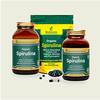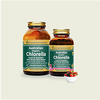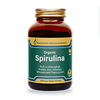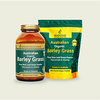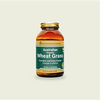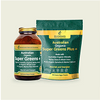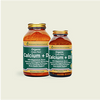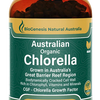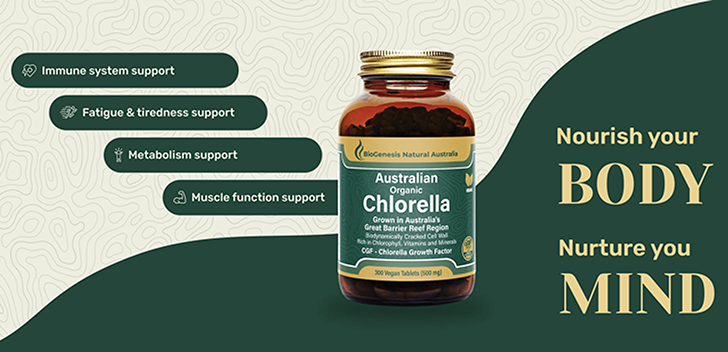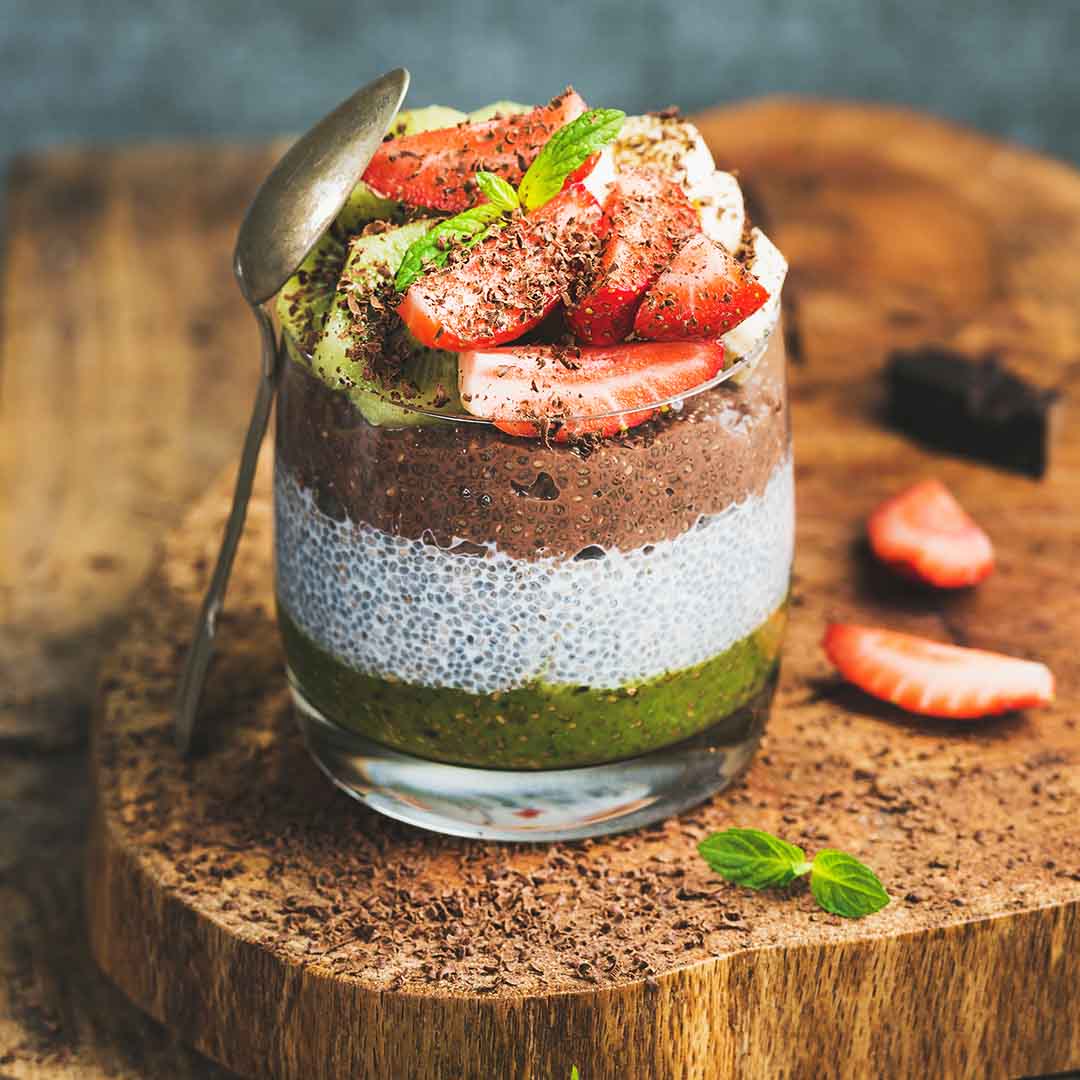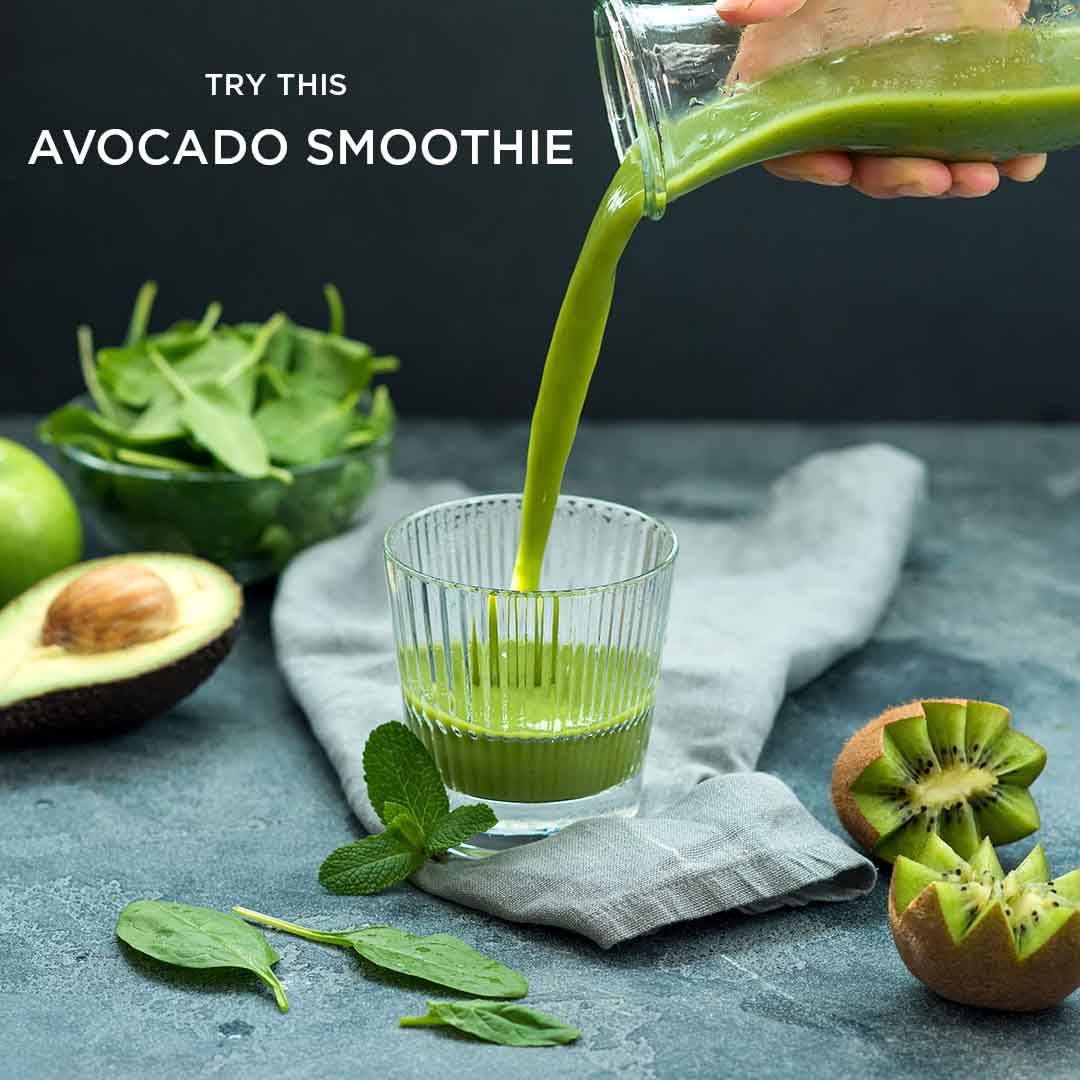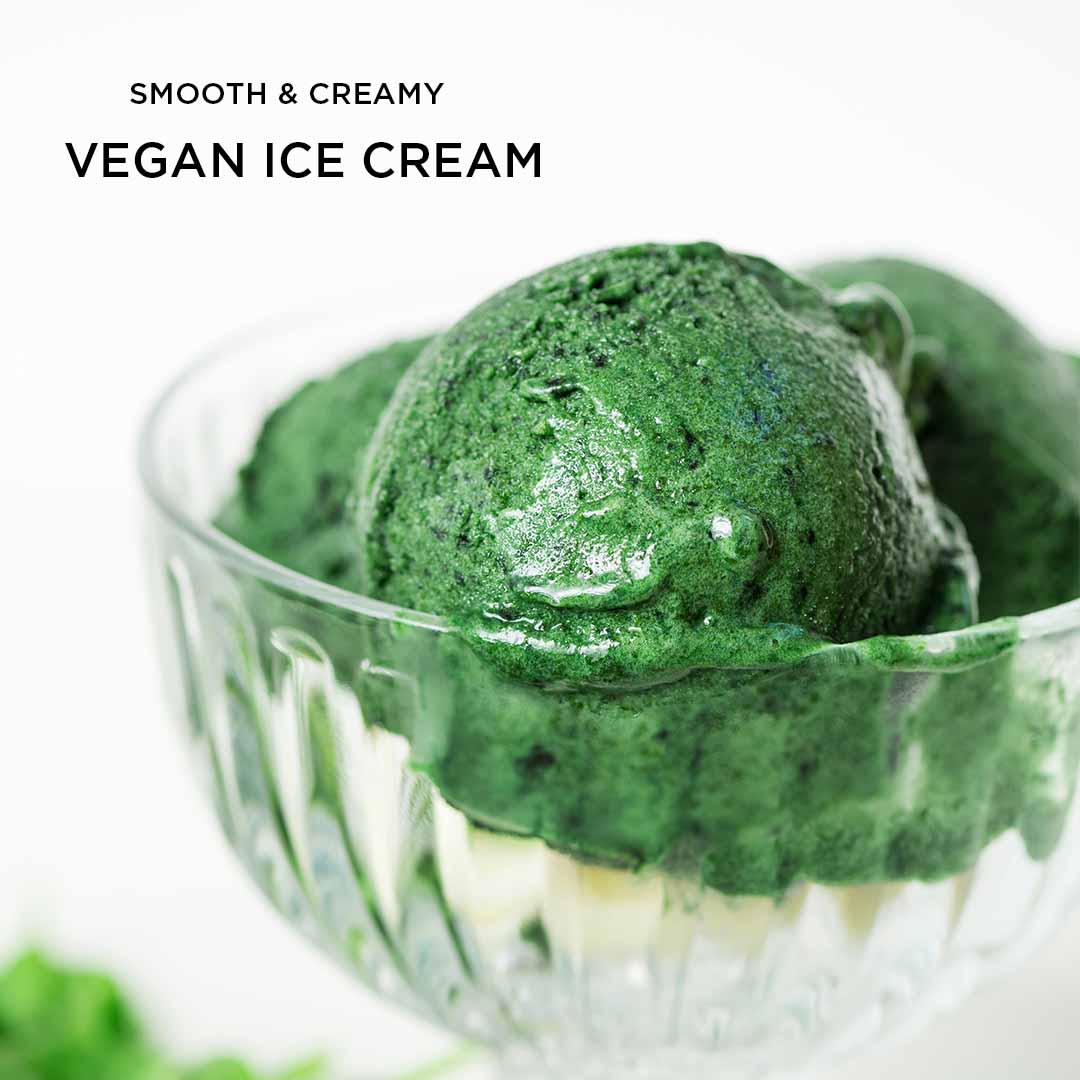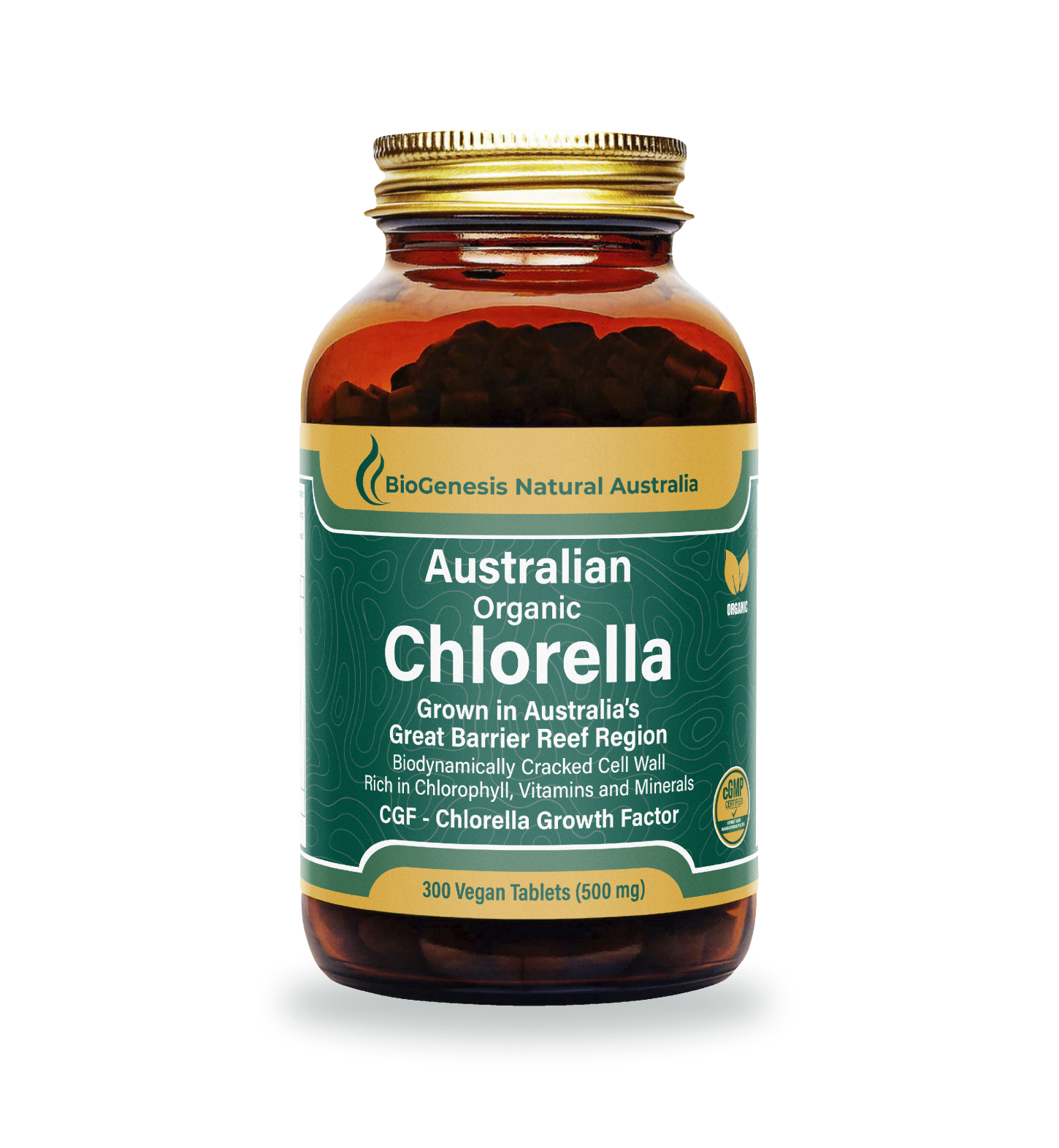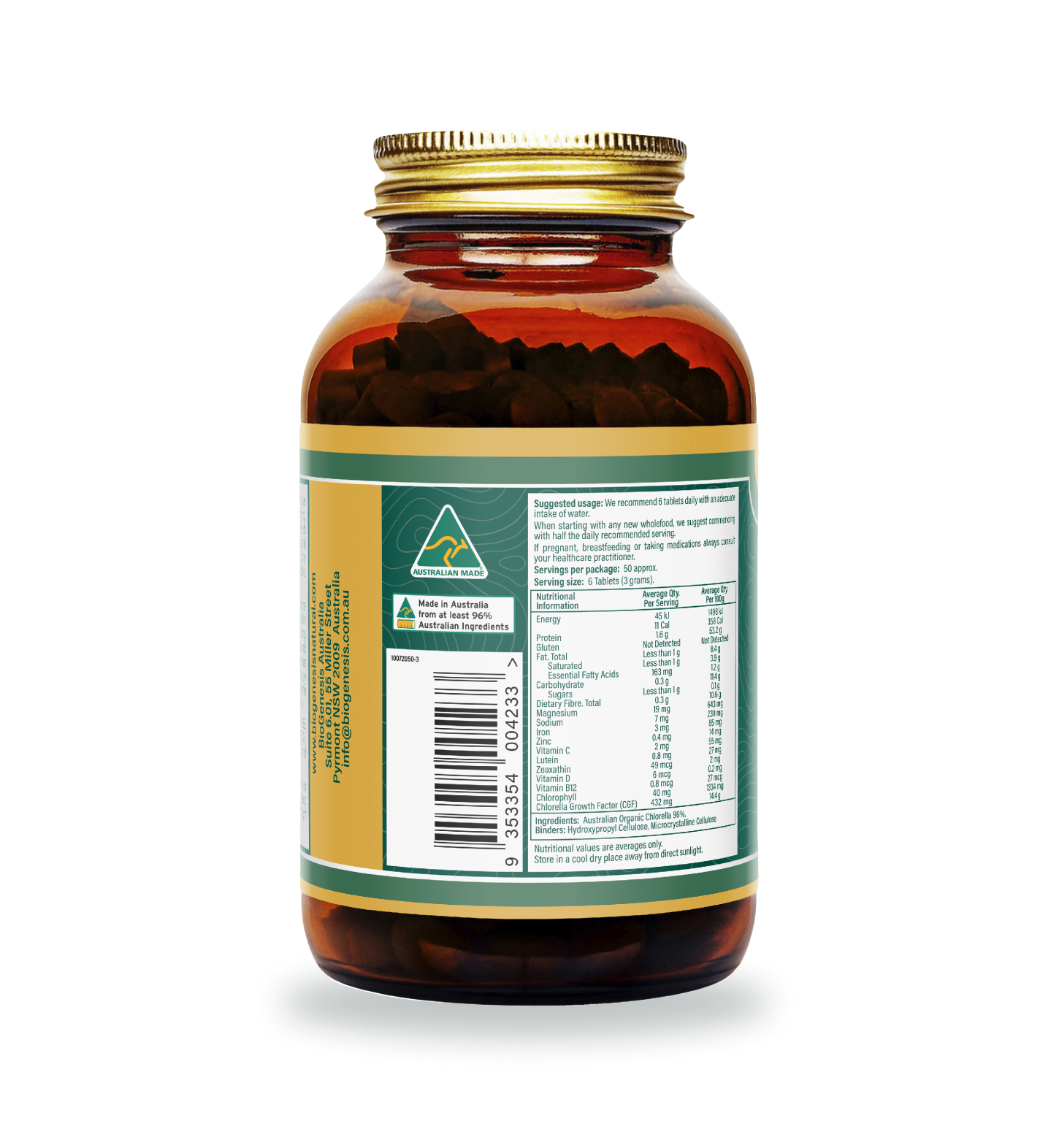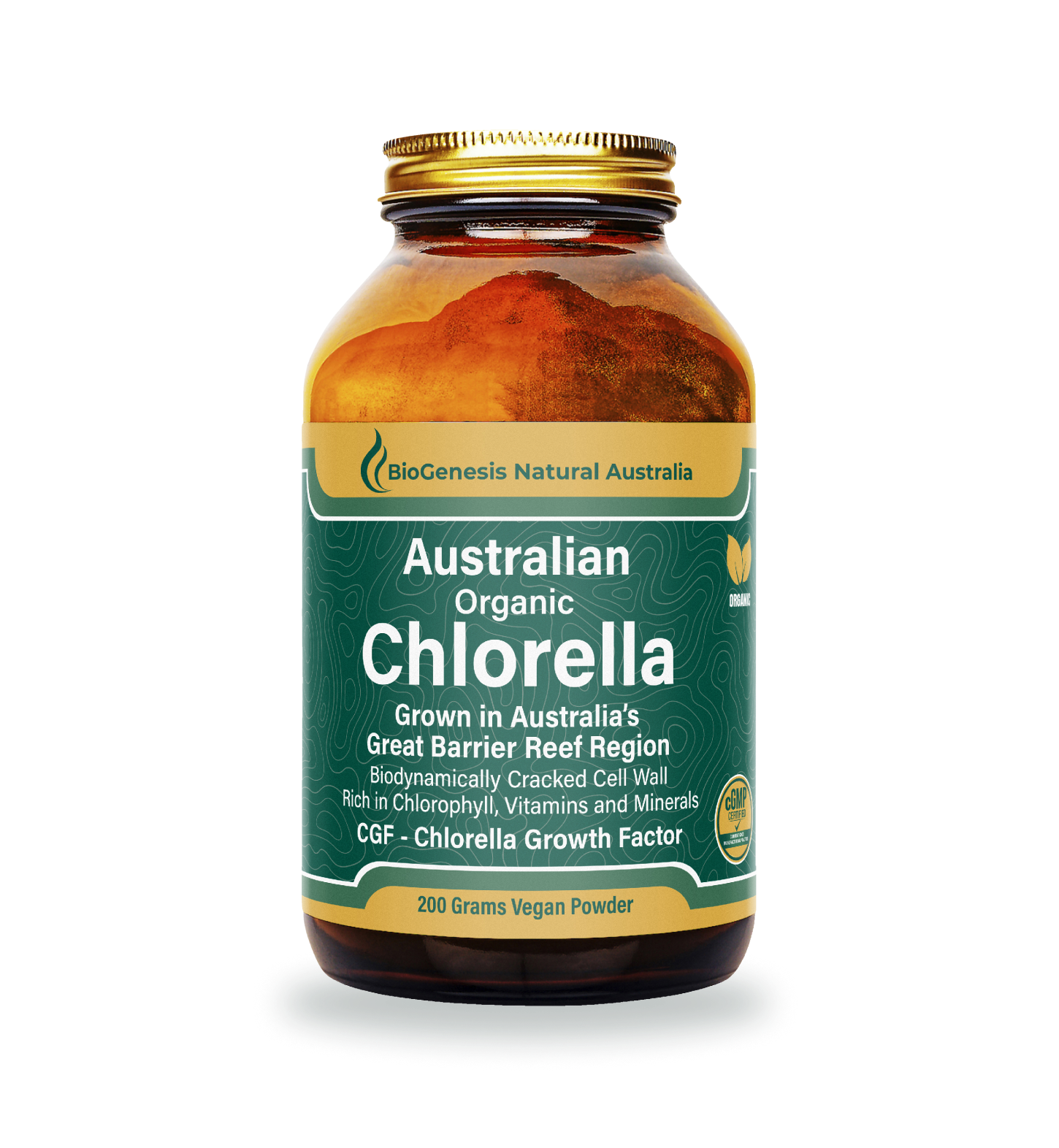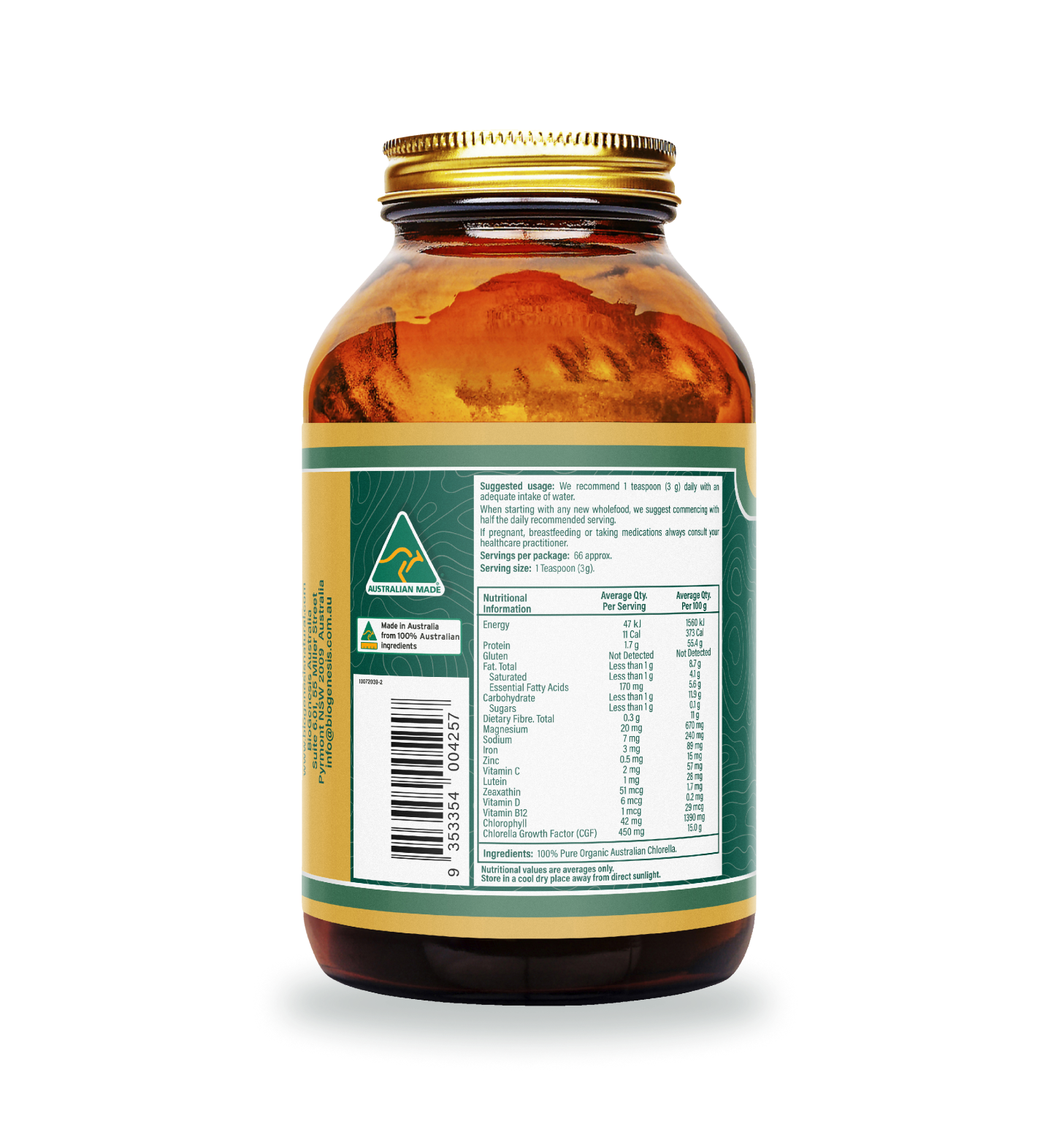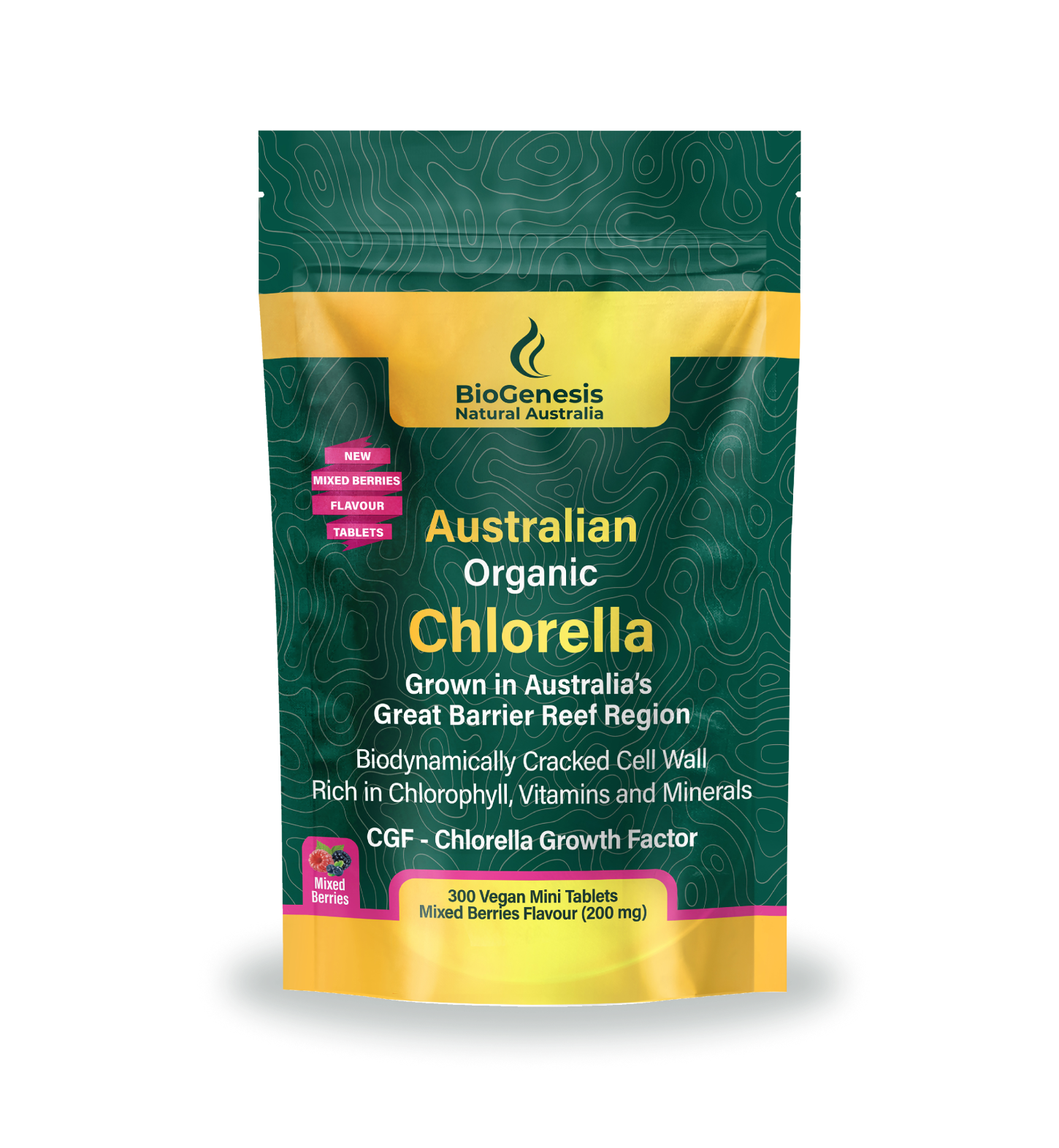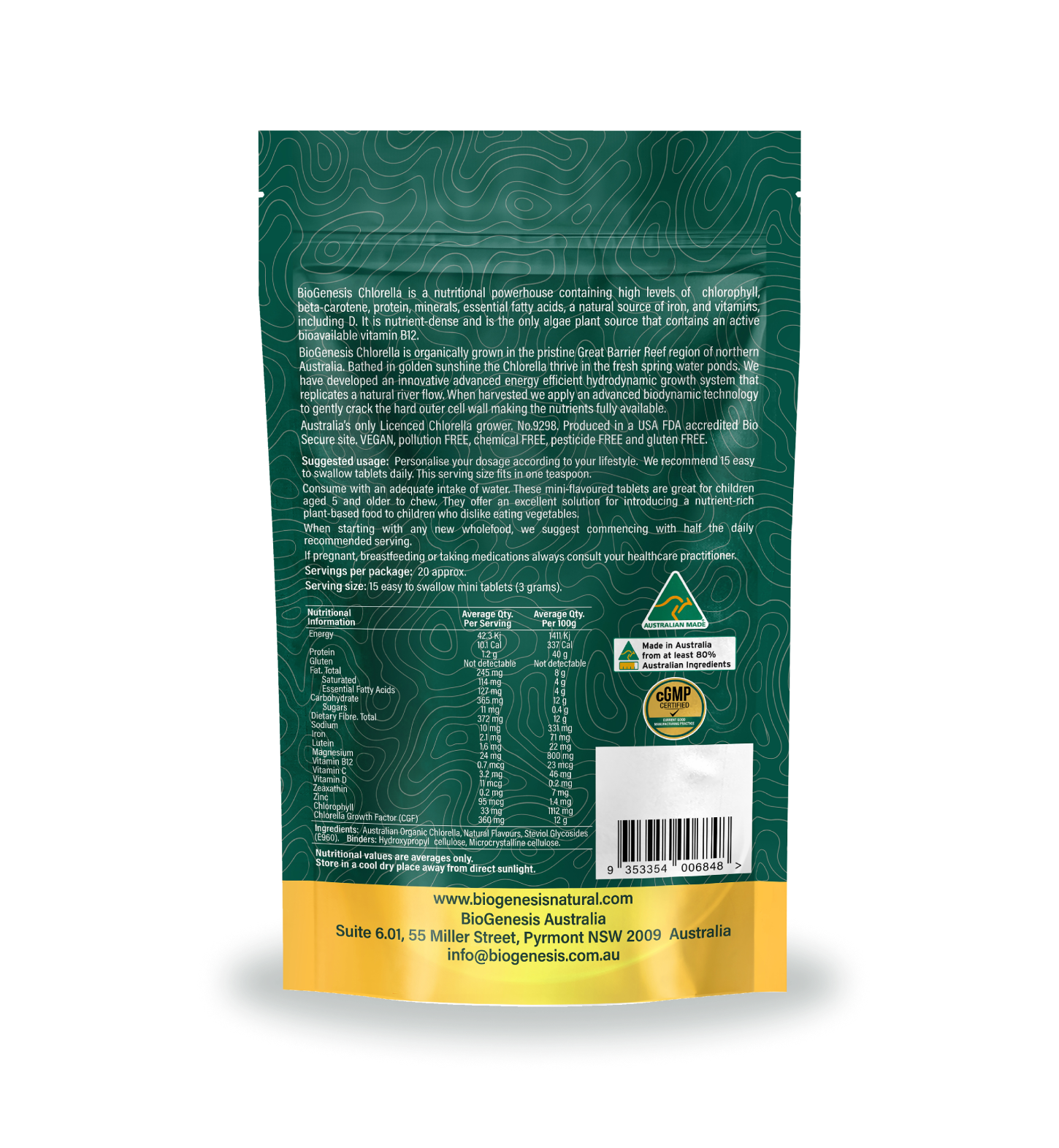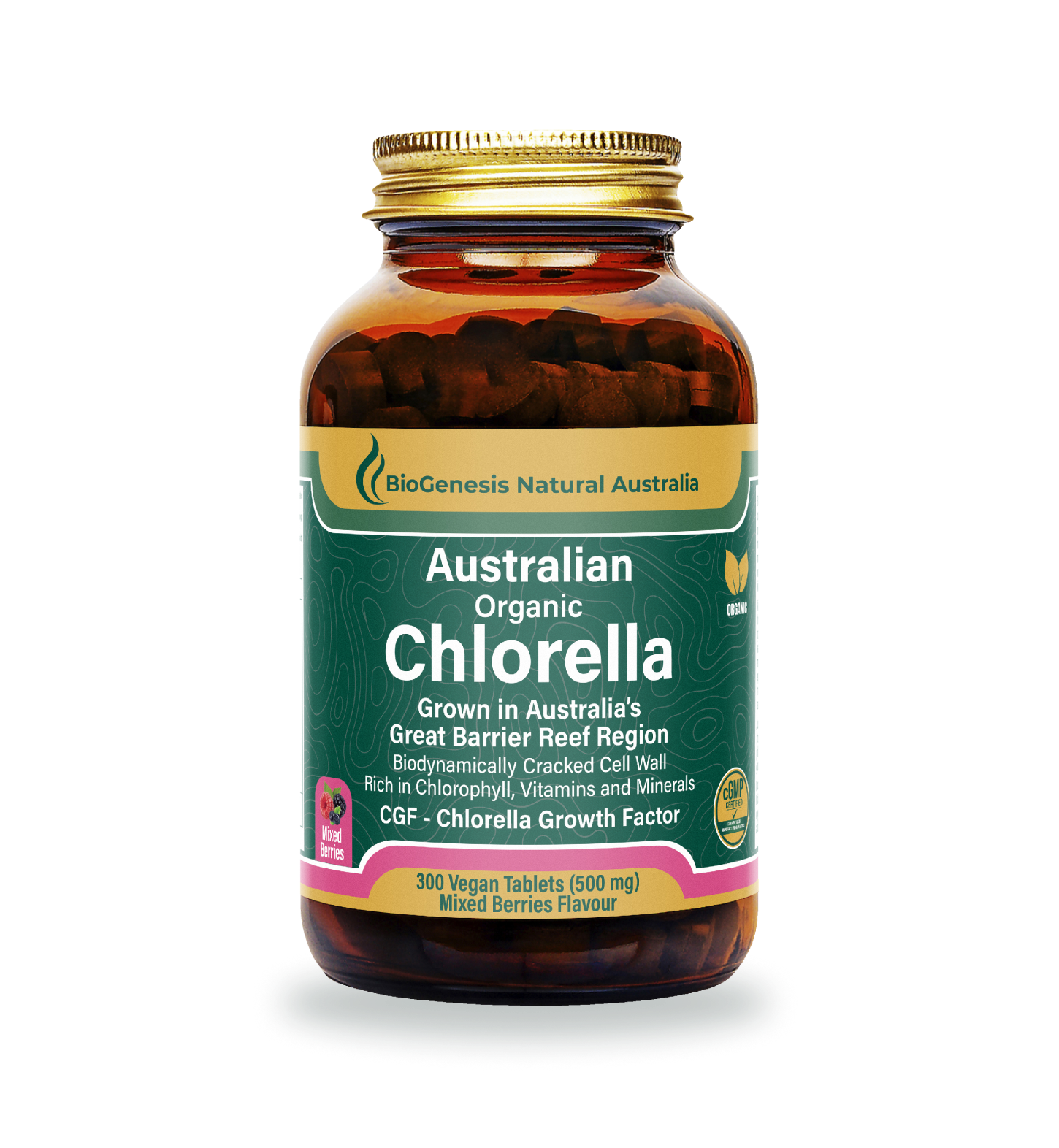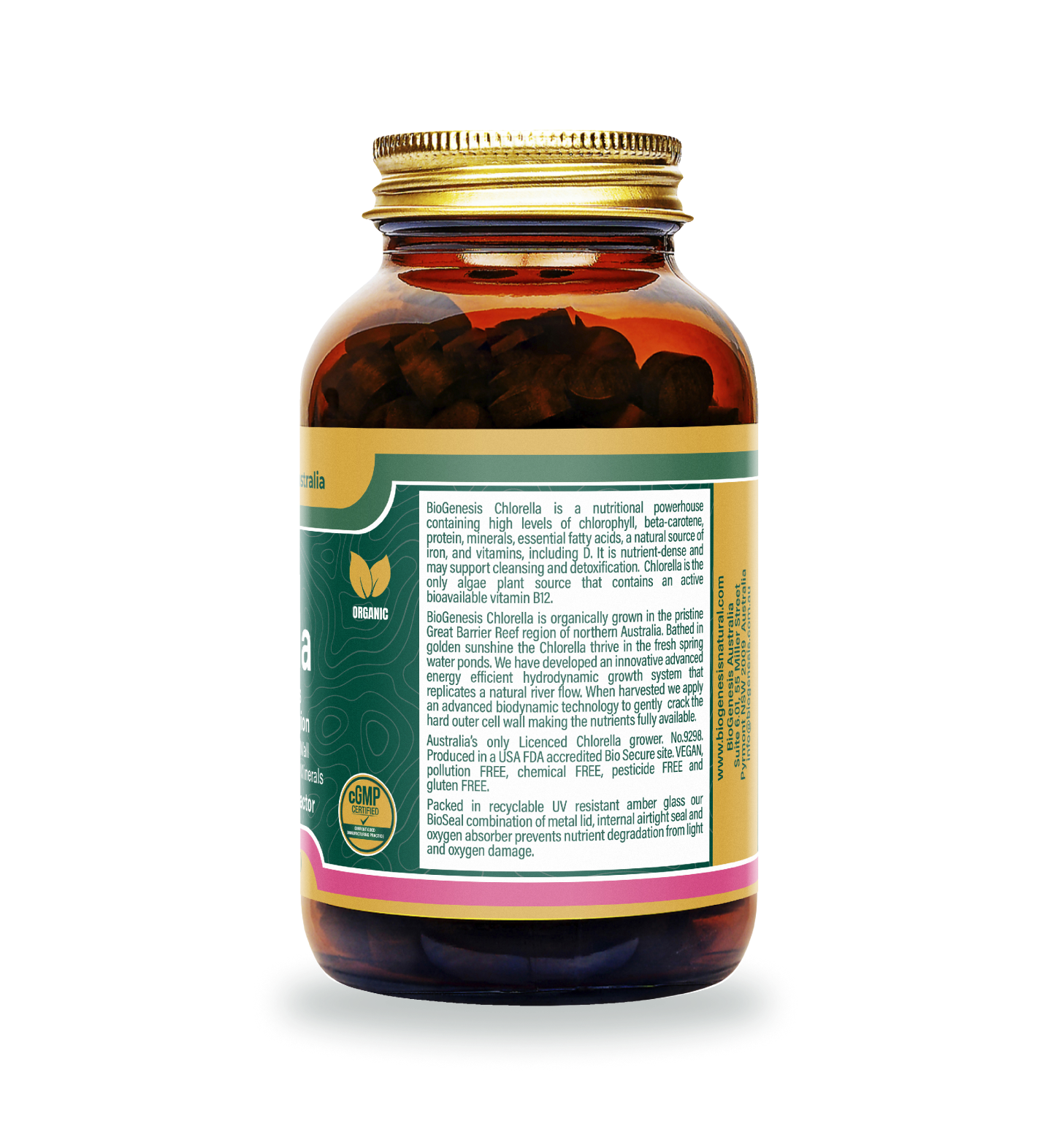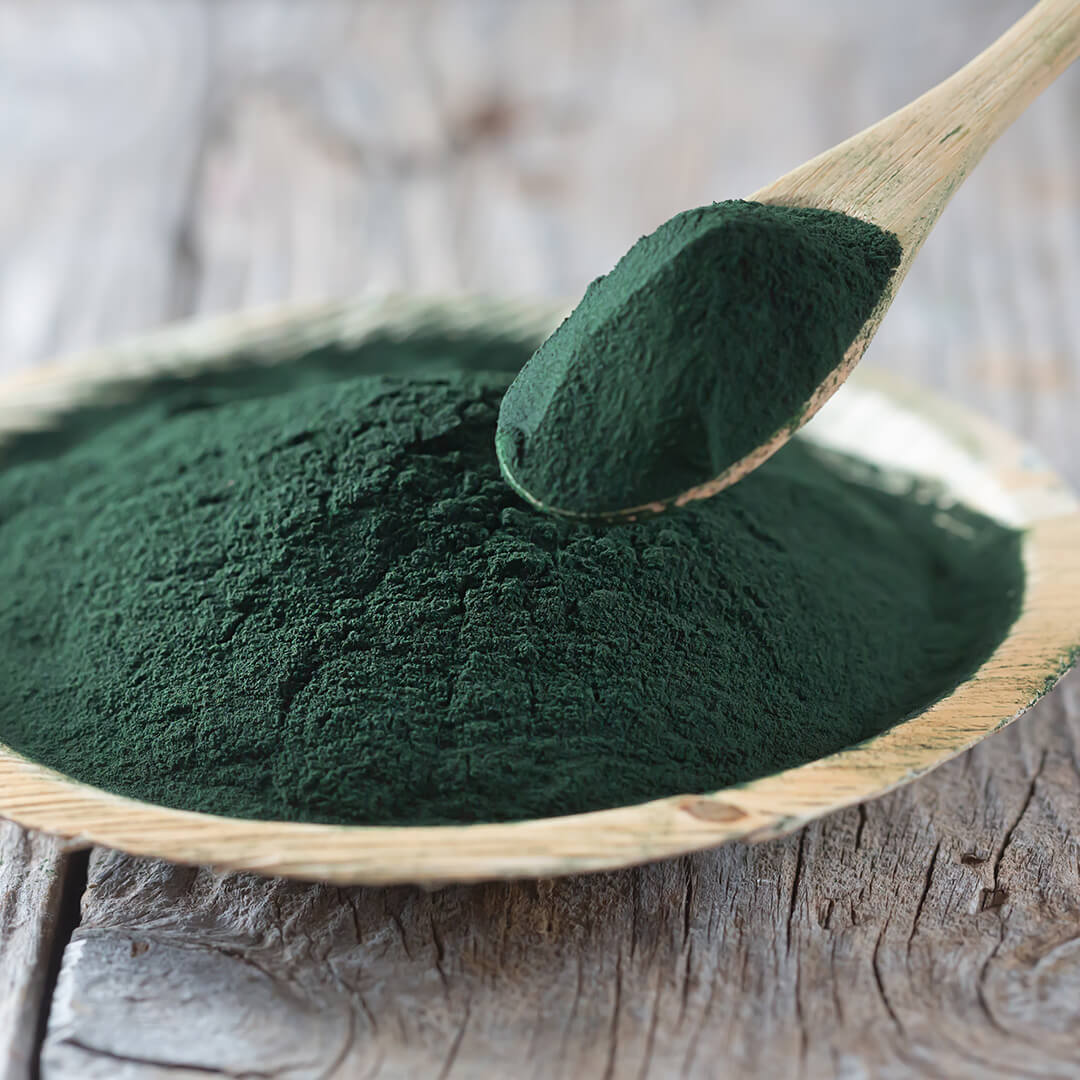
What is Spirulina & Chlorella + Marine Minerals?
by Colin McGregor
The world of supplements and health products can be overwhelming to navigate. The supplements industry has been booming since the 1950's, and natural health boosting foods have been popular since long before that. There are options ranging from ancient herbal remedies to synthetic lab-derived vitamins, and everything in between. Knowing which options are best is a highly personal decision that deserves plenty of deliberation. Luckily, the body of scientific research on both new and traditional food supplements is growing. There's more information available now than ever before which allows consumers to make informed decisions about products that impact their health and wellbeing. Three naturally aquatic derived nutrition supplements that have been thoroughly studied and have strong evidence for their powerful health-boosting abilities are chlorella, spirulina, and marine sourced minerals from red algae (Lithothamnium Calcareum).
7 Ingredients Your Multivitamin Should Have
The Health Benefits Of Spirulina, Chlorella, and Sea Vegetables
One of the first considerations when deciding on which supplements may be worth consuming is recognizing the difference between the various forms. There are two different factors that can classify supplements: natural or artificial; and single nutrient or multi-nutrient. Synthetic supplements are produced in a laboratory setting and may contain either a single nutrient, or they could be a multi-nutrient blend or complex with several different substances contained within. Naturally derived supplements can be whole foods, processed whole foods, or even extracts of something as specific as a single vitamin or mineral from an original whole food source. There are also products that contain a combination of naturally sourced and synthetic nutritional substances.
Synthetic vs Natural Nutrients: Does It Matter?
While synthetic supplements are often affordable and convenient, there's evidence to suggest that they don't always act as adequate substitutes for naturally occurring forms of nutrition. They're often not as bioavailable or effective as natural forms, and can sometimes even have adverse health effects (Thiel, 20001). The second consideration of single versus multiple nutrient-containing supplements also has relatively clear comparative results from the scientific community. Multi-nutrient supplements are often more nutritionally relevant since most functions of the body are extremely complex and require a variety of nutritional factors to orchestrate. Having a combination of complementary nutrients can ensure their optimal absorption and utilisation in many cases (Kellett, 20112). They can also help to prevent extreme nutritional imbalances more likely to occur from large doses of single nutrient supplements (Beitz, 20023).
Multivitamin vs Individual Vitamins: Pros & Cons of Each Supplement Routine
With both of these variables in mind, it's clear that there can be value in a range of types of supplements, but naturally sourced supplements from whole foods that contain a variety of complementary nutritional substances is an ideal option. Some of the most nutritionally dense foods on the planet that are used for natural diet supplement included algae’s. Spirulina is a variety of blue-green algae more technically specified as a cyanobacteria, and it has a long list of impressive health benefits. Spirulina is popular as an excellent source of a complete protein since it contains all the essential amino acids. Beyond this, it contains a wide variety of other nutrients including copper, iron, niacin, riboflavin, and thiamin (Soni, 20174).
4 Health Benefits of Spirulina
Many of the benefits seen from spirulina supplementation stem from its anti-parasitic functions, its anti-inflammatory properties, and its antioxidant content. These attributes have translated into improved energy, lessened allergy symptoms, and several other factors that altogether support general health and wellbeing (Kiran, 20165, Cingi, 20086). Some of the health benefits spirulina provides are relatively uncommon in food substances such as its anti-parasitic and allergy-reducing effects (Khan, 20057). This consideration, along with the fact that it contains a well-balanced array of nutrients modern-day diets are often depleted of make it a valuable supplement to include in a health supporting protocol.
Benefits of Spirulina: Nutrients, Antioxidants, and More
Chlorella is the most popular form of algae often used on its own or within natural health products. Chlorella is an even more dense source of nutrition than spirulina, though its profile is different enough that both are worth including into a natural supplement routine. Chlorella is rich in a long list of vitamins and minerals, including but not limited to: magnesium, iron, selenium, potassium, zinc, vitamin c, vitamin d, vitamin a, fibre, and omega 3 fatty acids (Rani, 20188). Chlorella could be considered a varied nutritional supplement all on its own because of the wide range of nutrients it provides. Much like spirulina, some of the nutrition it provides is of particular importance to those who don't include or limit animal products in their diet. The high content of omega 3s, iron, and vitamin D are all rare occurrences in plant-based foods, and highlight the usefulness of adding chlorella to vegetarian diets (Merchant, 20159).
Chlorella has several properties that have given it its well-deserved reputation of being a superior superfood. It's anti-inflammatory, anti-bacterial, and contains several antioxidants (Bito, 202010). These effects are what allows the algae to increase energy levels and even improve athletic performance and recovery (Zhang, 201911). One of the features chlorella is most famous for however are the impressive benefits it has on gut health (Lv, 202212). Gut health is well known to play a key role in overall wellbeing since it's intricately linked to skin, brain, metabolism, and blood health. Poor gut health can set off a domino-like cascade of issues within the body, so protecting its proper functioning with chlorella's ability to improve the microbiome is invaluable (Singh, 201713).
Chlorella contains several metal-binding functional groups which have shown remarkable abilities to help remove certain substances humans are frequently exposed to from the body (Yadav, 202114). Toxins can be present in household items or personal care products, as well as in food and water sources. Long-term health effects from several common toxins can cause respiratory issues, digestive issues, hormonal issues, or even neurological ones (Beck, 202015). Since toxin intake is rarely considered or assessed by many healthcare practitioners, it's thought that chlorella consumption is a responsible way to support the body's excretion of harmful substances that could otherwise build-up and become detrimental to long-term health.
A final beneficial substance within chlorella that can't be found in any other food is what's known as chlorella growth factor (CGF). Chlorella growth factor is a nutrient-complex that may have several relevant effects on the biochemical processes. This growth factor is the main driving force that helps the algae to grow so rapidly in nature, and it's thought to have similar assistance in humans (Machmud, 202016). It's been shown to help with gut health, recovery from physical activity, and it may even potentially improve the lustre of hair, skin, and nails (Gomes, 202017).
What Is Chlorella Growth Factor And Why Is It Good For You?
The third and final water-sourced nutritional substance worth examining for its health benefits is a product from an ocean-sourced red algae called Lithothamnium Calcareum. It is a naturally occurring organic red algae supplement that's used as a multi-mineral complex. The red algae secrete a hard exterior shell rich in minerals that breaks off after 5 years and can then be sustainably harvested from the ocean floor. This fascinating substance contains over 70 different naturally occurring minerals and therefore offers a wide range of benefits for human health (Frestedt, 200818).
The Many Benefits of Red Algae
Each different mineral humans need serves a unique function in the body, so it's difficult to narrow down the positive effects of the multi-mineral complex to a handful of examples. Perhaps most notably, the red algae product contains high amounts of calcium and magnesium and trace amounts of manganese, sodium, Iodine selenium, strontium, boron and over 70 other marine trace minerals which are required for bone health, gut health, and even for ideal cognitive functioning. Lithothamnium Calcareum has been studied for these uses and has clearly emerged as an effective nutritional support to achieve those outcomes (Crowley, 201819).
The 5 Most Important Minerals You Should Be Getting In Your Diet
Other sources of minerals often originate from the earth's soil, but modern farming practices have made many soils mineral-depleted, which diminishes the mineral content of the foods grown in them (Thomas, 200320). This increasing gap between mineral requirements and mineral availability from food has created a need for multi-mineral supplement options for many consumers. Aquamin is a sustainable and high-quality source of these vital nutrients that seem to slowly be disappearing from the modern diet.
How Agriculture Depletes Soil Of Minerals And What To Do
There are certainly other foods that can contribute to good health beyond the scope of these three substances, but when considering nutrient-balance and nutrient-density, it's difficult to find more valuable alternatives. Including all three is a comprehensive way to ensure adequate intake of several important nutrients that are commonly under consumed, and the bioavailability of these natural supplements poses a strong argument for their use over synthetic multivitamin options. In sum, their effectiveness for boosting health is well studied, and likely worth the investment for anyone looking to improve both their short-term wellness, and long-term health.
-
Aghajanpour, M., Nazer, M. R., Obeidavi, Z., Akbari, M., Ezati, P., & Kor, N. M. (2017). Functional foods and their role in cancer prevention and health promotion: A comprehensive review. American Journal of Cancer Research, 7(4), 740-769. Retrieved from https://www.ncbi.nlm.nih.gov/pmc/articles/PMC5429334/
-
Biesalski, H. K., & Dragsted, L. O. (2011). Bioactive compounds: Definition and assessment of activity. Nutrition, 17(12), 1207-1215. https://doi.org/10.1016/S0899-9007(01)00653-6
-
Capelli, B., Cysewski, G. R., & Lorenz, R. T. (2010). Effects of astaxanthin on human blood rheology. Journal of Clinical Biochemistry and Nutrition, 47(2), 130-137. https://doi.org/10.3164/jcbn.10-56
-
Chew, B. P., & Park, J. S. (2004). Carotenoid action on the immune response. The Journal of Nutrition, 134(1), 257S-261S. https://doi.org/10.1093/jn/134.1.257S
-
Elyasi, M., Abdollahzad, H., Hosseini, S., & Khaje-Bishak, Y. (2017). Investigation of the effects of Chlorella vulgaris supplementation in patients with non-alcoholic fatty liver disease: A randomized clinical trial. Hepatitis Monthly, 17(10), e58731. https://doi.org/10.5812/hepatmon.58731
-
Hsu, Y. W., Tsai, C. F., Chen, W. K., & Huang, C. F. (2013). Protective effects of Chlorella-derived peptide against UVC-induced inhibition of cell viability and procollagen type I expression through the inhibition of ROS generation in human skin fibroblasts. Process Biochemistry, 48(5-6), 816-824. https://doi.org/10.1016/j.procbio.2013.03.019
-
Karkos, P. D., Leong, S. C., Karkos, C. D., Sivaji, N., & Assimakopoulos, D. A. (2008). Spirulina in clinical practice: Evidence-based human applications. European Archives of Oto-Rhino-Laryngology, 265(10), 1219-1224. https://doi.org/10.1007/s00405-008-0642-8
-
Maqsood, S., Benjakul, S., Abushelaibi, A., & Alam, A. (2014). Phenolic compounds and plant phenolic extracts as natural antioxidants in prevention of lipid oxidation in seafood: A detailed review. Comprehensive Reviews in Food Science and Food Safety, 13(6), 1125-1140. https://doi.org/10.1111/1541-4337.12092
-
Merchant, R. E., & Andre, C. A. (2001). A review of recent clinical trials of the nutritional supplement Chlorella pyrenoidosa in the treatment of fibromyalgia, hypertension, and ulcerative colitis. Alternative Therapies in Health and Medicine, 7(3), 79-91. Retrieved from https://pubmed.ncbi.nlm.nih.gov/11347287/
-
Miranda, M. S., Cintra, R. G., Barros, S. B., & Mancini Filho, J. (1998). Antioxidant activity of the microalga Spirulina maxima. Brazilian Journal of Medical and Biological Research, 31(8), 1075-1079. https://doi.org/10.1590/S0100-879X1998000800007
-
Nakano, S., Takekoshi, H., & Nakano, M. (2007). Chlorella (Chlorella pyrenoidosa) supplementation decreases dioxin and increases immunoglobulin a concentrations in breast milk. Journal of Medicinal Food, 10(1), 134-142. https://doi.org/10.1089/jmf.2006.023
-
Panahi, Y., Darvishi, B., Jowzi, N., Beiraghdar, F., & Sahebkar, A. (2016). Chlorella vulgaris: A multifunctional dietary supplement with diverse medicinal properties. Current Pharmaceutical Design, 22(2), 164-173. https://doi.org/10.2174/1381612822666151112145221
-
Patel, S. (2016). Functional food red yeast rice (RYR) for metabolic syndrome amelioration: A review on pros and cons. World Journal of Microbiology and Biotechnology, 32(5), 87. https://doi.org/10.1007/s11274-016-2028-z
-
Serban, M. C., Sahebkar, A., Dragan, S., Stoichescu-Hogea, G., Ursoniu, S., Andrica, F., & Banach, M. (2016). A systematic review and meta-analysis of the impact of Spirulina supplementation on plasma lipid concentrations. Clinical Nutrition, 35(4), 842-851. https://doi.org/10.1016/j.clnu.2015.07.009
-
Teas, J., Baldeón, M. E., Chiriboga, D. E., Davis, J. R., Sarriés, A. J., & Braverman, L. E. (2009). Could dietary seaweed reverse the metabolic syndrome? Asia Pacific Journal of Clinical Nutrition, 18(2), 145-154.
-
Watanabe, F., Takenaka, S., Kittaka-Katsura, H., Ebara, S., & Miyamoto, E. (2002). Characterization and bioavailability of vitamin B12-compounds from edible algae. Journal of Nutritional Science and Vitaminology, 48(5), 325-331. https://doi.org/10.3177/jnsv.48.325
-
Wu, Q., Liu, L., Miron, A., Klímová, B., Wan, D., & Kuča, K. (2016). The antioxidant, immunomodulatory, and anti-inflammatory activities of Spirulina: An overview. Archives of Toxicology, 90(8), 1817-1840. https://doi.org/10.1007/s00204-016-1744-5
-
Xu, Y., & Pan, S. (2015). The failure of animal models of neuroprotection in acute ischemic stroke to translate to clinical efficacy. Medical Science Monitor Basic Research, 21, 87-94. https://doi.org/10.12659/MSMBR.894327



